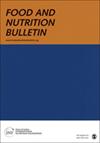本地学校供餐:越南贫困少数民族社区试点的实施经验
IF 1.8
4区 医学
Q3 FOOD SCIENCE & TECHNOLOGY
引用次数: 1
摘要
背景:营养不良威胁着偏远弱势社区学龄前儿童的健康和未来。在幼儿园中,自制学校供餐(HGSF)可以对儿童的营养产生积极影响,同时为整个社区创造多重利益。然而,在偏远地区的多部门规划中实施HGSF缺乏证据。目的:本研究评估了越南山区少数民族社区营养敏感农业(NSA)计划的一部分HGSF试点干预措施。它的目的是确定干预所带来的变化,特别是儿童食物的多样性、食物来源、变化的障碍和促进因素以及未来的挑战和战略。方法:混合方法评估涵盖了学校膳食的多样性、成本和食物来源,但重点是观察到的由HGSF干预产生的变化,以及实施过程中感知到的障碍和促进因素。数据主要通过半结构化访谈(n = 30)和7个焦点小组讨论(n = 76)收集。结果:学校供餐有助于增加儿童所食用食物的多样性。超过30%的食物是自家种植的。受访者表示上学人数有所增加;儿童的食物偏好和卫生习惯有所改善,父母的照顾和喂养习惯也有所改善。地方粮食系统不再以经济作物为导向,而是更加自力更生,从而有助于家庭粮食安全和创收。社会资本增加。积极的变化归因于HGSF和NSA项目组成部分之间的协同作用。贫困和对外部冲击的抵御能力有限威胁到可持续性。结论:在营养不良儿童及其社区高发的山区少数民族地区,在国家安全局项目中实施HGSF。本文章由计算机程序翻译,如有差异,请以英文原文为准。
Home-Grown School Feeding: Implementation Lessons From a Pilot in a Poor Ethnic Minority Community in Vietnam
Background: Undernutrition threatens the health and future of preschool children in disadvantaged remote communities. Home-grown school feeding (HGSF) in nursery schools could positively impact children’s nutrition while creating multiple benefits for the whole community. However, evidence is lacking on implementation of HGSF within multi-sectoral programs in remote areas. Objective: This study assessed an HGSF pilot intervention, part of a nutrition-sensitive agriculture (NSA) program, in a mountain ethnic minority community in Vietnam. It aimed to identify the changes brought about by the intervention, in particular diversity of children’s food, food sources, barriers and facilitators to change, and future challenges and strategies. Methods: Mixed-methods assessment covered school meal diversity, cost, and food sources but the key focus was on observed changes resulting from the HGSF intervention and perceived barriers and facilitators to its implementation. Data were collected mainly through semi-structured interviews (n = 30) and seven focus group discussions (n = 76). Results: School meals contributed to increasing diversity of food consumed by children. Above 30% of foods used were home-grown. Respondents reported increased school attendance; children’s food preferences and hygiene practices improved as did parents’ caring and feeding practices. Local food systems became less cash-crop-oriented and more self-reliant, contributing to household food security and income generation. Social capital increased. Positive changes were attributed to HGSF and synergy among NSA program components. Poverty and limited resilience to external shocks threatened sustainability. Conclusions: Implementing HGSF within an NSA program in a mountainous ethnic minority area with a high prevalence of undernutrition benefitted children and their communities.
求助全文
通过发布文献求助,成功后即可免费获取论文全文。
去求助
来源期刊

Food and Nutrition Bulletin
工程技术-食品科技
CiteScore
4.10
自引率
0.00%
发文量
31
审稿时长
18-36 weeks
期刊介绍:
The Food and Nutrition Bulletin (FNB,) is a peer-reviewed, academic journal published quarterly by the Nevin Scrimshaw International Nutrition Foundation. The Journal is one of the leading resources used by researchers, academics, nutrition policy makers and planners in over 125 countries to obtain the most current research and policy information related to nutrition in developing countries.
 求助内容:
求助内容: 应助结果提醒方式:
应助结果提醒方式:


